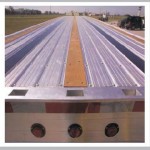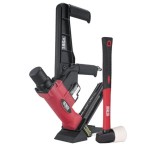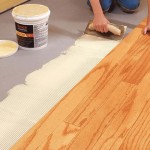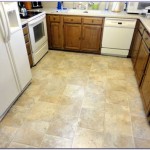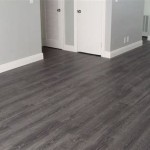Palm Acacia Flooring Reviews: A Comprehensive Guide
Acacia flooring has gained considerable popularity in recent years due to its durability, aesthetic appeal, and relatively affordable price point. Among the various types of acacia flooring available, palm acacia stands out with its unique grain patterns and exotic look. This article provides a thorough examination of palm acacia flooring, covering its characteristics, advantages, disadvantages, installation considerations, maintenance requirements, and a summary of what consumers generally report about their experiences with this type of flooring.
Acacia, also known as thorny acacia, is a genus of trees and shrubs belonging to the family Fabaceae (legumes). It is native to Australia and Africa, but can now be found in many parts of the world. Acacia wood is known for being hard, dense and resists wear and tear. It is these qualities that make it a favorable choice for flooring.
Palm acacia flooring is distinguished by its distinctive grain pattern, which often includes swirling patterns and knots. These characteristics give it the appearance of palm wood, hence the name. This unique aesthetic contributes to a warm and inviting atmosphere in a room.
Understanding Palm Acacia Flooring Characteristics
The characteristics of palm acacia flooring are pivotal when evaluating its suitability for a specific space. Understanding these characteristics allows homeowners to make informed decisions that align with their lifestyle and aesthetic preferences.
Hardness and Durability: Palm acacia is celebrated for its superior hardness. The Janka hardness scale measures the resistance of wood to indentation. Palm acacia typically scores very high on this scale, often exceeding those of more traditional flooring options like oak or maple. This high level of hardness translates to enhanced durability, making it less susceptible to dents, scratches, and wear from everyday foot traffic. This makes it a viable option for high-traffic areas like living rooms, hallways, and kitchens.
Grain Patterns and Aesthetics: The aesthetic appeal of palm acacia is a major contributing factor to its popularity. The grain patterns and color variations inherent in palm acacia flooring are what really set it apart from the other flooring types. The swirling patterns, distinctive knots, and color variations, which range from light golden browns to darker reddish hues, create a unique visual impact. This natural variation ensures that no two planks are exactly alike, contributing to a custom, one-of-a-kind look. The exotic appearance of palm acacia can complement both modern and traditional interior design styles.
Color Variation: The color variation in palm acacia is a key characteristic that many homeowners find appealing. The natural range of colors, from light to dark, adds depth and character to the flooring. This variation helps to mask dirt and scratches, which can be a practical advantage in a busy household.
Stability: While acacia is generally stable, it is still susceptible to expansion and contraction due to changes in humidity and temperature. Properly acclimating the flooring before installation is extremely important. This means allowing the wood to adjust to the environment in which it will be installed for a period of several days before installation. This adjustment period reduces the risk of warping, cupping, or gapping after installation. It is also recommended to maintain a consistent indoor climate to minimize movement in the wood. Homes in regions with extreme humidity fluctuations may require a dehumidifier or humidifier to maintain optimal conditions.
Types of Palm Acacia Flooring: Palm acacia flooring is available in various forms, each of which offers different advantages: solid hardwood, engineered hardwood, and laminate. Solid hardwood is made from planks of solid acacia wood, providing maximum durability and longevity. Solid acacia is the top option because it can be refinished several times over its lifespan. Engineered hardwood consists of a thin layer of acacia veneer bonded to a core of plywood or high-density fiberboard (HDF). Engineered hardwood is dimensionally more stable than solid hardwood, making it a better choice for areas with higher moisture levels, such as basements. Laminate flooring mimics the look of palm acacia but is made from synthetic materials. While laminate is less expensive and easier to install, it does not offer the same level of durability or aesthetic appeal as hardwood or engineered hardwood.
Advantages of Palm Acacia Flooring
Choosing palm acacia flooring offers numerous advantages that cater to both aesthetic and practical needs. The specific benefits of this kind of flooring make it a viable option for many homeowners.
Durability and Longevity: The high Janka hardness rating of palm acacia directly translates to enhanced durability. This hardness makes it well-suited for high-traffic areas such as living rooms, hallways, and kitchens. Palm acacia flooring can withstand the daily wear and tear of busy households, making it a long-lasting flooring solution. The ability to refinish solid acacia flooring further extends its life, allowing homeowners to restore its original luster after years of use. Engineered acacia flooring can also be refinished, but typically only once or twice, depending on the thickness of the veneer layer.
Aesthetic Appeal: The unique grain patterns and color variations of palm acacia contribute to its distinct aesthetic appeal. The swirling patterns, knots, and color spectrum from light to dark create a visually stunning flooring option. This aesthetic can transform a room, adding warmth, character, and a touch of exotic elegance. The natural variations in color and grain hide dirt and minor imperfections, maintaining the floor's appearance even with regular use. Palm acacia flooring complements a variety of interior design styles, from rustic to modern, adding versatility to its appeal.
Cost-Effectiveness: While the initial cost of palm acacia flooring can be higher than some other flooring options like laminate or vinyl, its longevity and durability can make it a cost-effective choice in the long run. The fact that it is highly resistant to wear and tear and can be refinished reduces the need for frequent replacements, which leads to long-term savings. Also, in many markets, acacia is significantly less expensive than other hardwoods such as Brazilian Cherry or Teak.
Environmental Considerations: Acacia is a fast-growing species, making it a more sustainable choice compared to some slow-growing hardwoods. Responsible sourcing of acacia flooring ensures that the wood comes from well-managed forests, promoting sustainable forestry practices. Homeowners who prioritize environmental sustainability will appreciate the use of acacia as a renewable resource. Certifications such as the Forest Stewardship Council (FSC) can help ensure that the acacia flooring is sourced from responsibly managed forests.
Potential Drawbacks and Considerations
Despite its numerous advantages, palm acacia flooring has some potential drawbacks that homeowners should consider before making a purchase.
Moisture Sensitivity: Like all types of wood flooring, palm acacia is susceptible to moisture damage. Excessive humidity or water exposure can cause the wood to warp, cup, or swell. It is not recommended for use in bathrooms or laundry rooms that are prone to spills. Proper sealing and maintenance are essential to minimize the risk of moisture damage. In areas with high humidity, the use of a dehumidifier can help maintain optimal moisture levels.
Installation Complexity: Installing solid palm acacia flooring can be a challenging project, particularly for those without prior experience. Proper acclimation, subfloor preparation, and precise cutting are crucial for a successful installation. Incorrect installation can lead to problems such as gapping, squeaking, or unevenness. Engineered acacia flooring is generally easier to install than solid hardwood, especially with click-lock systems. However, even with engineered flooring, careful attention to detail is necessary. Professional installation is recommended to ensure the best possible results.
Scratch Resistance: While acacia is a hardwood, it is not completely immune to scratches. Sharp objects, pet claws, and abrasive materials can potentially scratch the surface. Using felt pads under furniture legs, placing mats at entrances, and regularly sweeping or vacuuming the floor can help minimize the risk of scratches. Applying a protective finish can also enhance scratch resistance. Regular maintenance and preventative measures are essential to preserving the floor's appearance.
Color Fading: Like other types of wood, palm acacia can fade or change color over time when exposed to direct sunlight. Using window coverings such as blinds or curtains can help protect the floor from prolonged sun exposure. Rotating rugs and furniture periodically can also help ensure that the floor ages evenly. Applying a UV-resistant finish can help slow down the fading process. Despite these measures, some degree of color change is inevitable, and this natural aging process can add character to the floor.
In summary, palm acacia flooring presents an attractive and durable flooring option. Its unique aesthetic, hardness, and sustainability make it a compelling choice for many homeowners. However, its moisture sensitivity, installation complexity, and potential for scratches and color fading should be carefully considered before making a decision. By weighing the advantages and disadvantages, and by implementing proper installation and maintenance practices, homeowners can enjoy the beauty and longevity of palm acacia flooring for many years.

Virginia Mill Works 3 4 In Palm Acacia Distressed Solid Hardwood Flooring 75 Wide Ll

Pwopalm Belardo Premiere Wood Palm Desert Acacia Bellardo 5

Pwopalm Bellamy Premiere Wood Palm Desert Acacia 5

Pwopalm Coaca Premiere Wood Palm Desert Acacia 5

Prefinished Palm Acacia Distressed 2 In Wide X 6 5 Ft Length Threshold Ll Flooring

Pwopalm Romana Premiere Wood Palm Desert Acacia 5

Pwopalm Orchard Premiere Wood Palm Desert Acacia 5

Virginia Mill Works 3 4 In Palm Acacia Distressed Solid Hardwood Flooring 75 Wide Ll

Pwopalm Viceroy Premiere Wood Palm Desert Acacia 5

Home Decorators Collection Natural Palm 8 Mm T X 5 In W Laminate Wood Flooring 13 3 Sqft Case Hl83 The Depot

